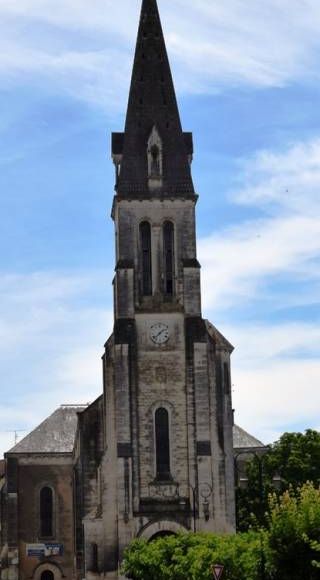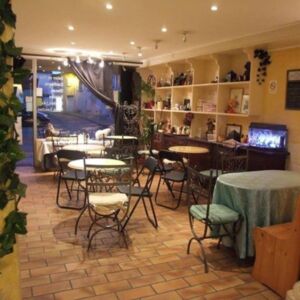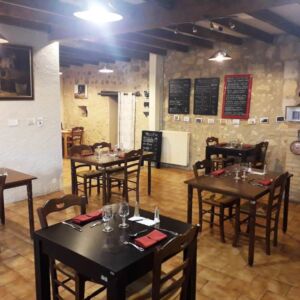Mussidan
Its geographic situation to the confluence of the Isle and the Crempse has made Mussidan throughout history a strategic place to control communications of the Vallée de l’Isle or the exploitation of natural resources.
The circuit “Cœur de ville” allows you to discover history of Mussidan by walking around on a towpath of 5.2km.
Before Mussidan
In the Middle and Upper Palaeolithic, several years ago, men roamed these hillsides in search of good quality flint nodules for the manufacture of tools and hunting weapons, or stationed themselves on the plateaus to wait for the migrations of the herds which went up the Vallée de l’Isle.
From the Neolithic period, around 3.000 BC, the populations of the Vallée de l’Isle have been living in the same area. The populations of the Vallée de l’Isle became sedentary. The valley and its terraces were thus cleared and put into culture.
Origins
After the Roman conquest, a Gallo-Roman settlement, probably a villa, exploited the surrounding area: clay for pottery and vines for wine. Over the centuries, a small village grew up around the farm, to which the owner of the villa would have left his name: perhaps Mutius. Associated with a topographical feature, as the limestone promontory of the confluence must have been (dunum, “height” in Latin), this name would have formed Mutidunum: “the height of Mutius”.
The fondation of Mulcedonum
This small town, called Mulcedonum in 830, was severely plundered by the Normans between 847 and the beginning of the 10th century, since it had to be refunded between 940 and 960 by Aldagerius, son of a Frankish dignitary of the Carolingian dynasty. Its first lords, the Aimon de Mussidan, built a castle and gave privileges to the inhabitants of the fortified village which was formed at its feet.
The castellany of Muyschidano
In the middle of the 12th century, the Lords of Mussidan, the Montauts, supported the party of Eleanor d’Aquitaine and the English in their long conflict against the king of France. Thus, after opposing the Counts of Périgord, vassals of the King of France, for nearly 300 years, the Lords of Mussidan sided with the French at the very end of the One-Hundred War, in the middle of the 15th century.
Mouchidan between Catholics and Protestants
In 1497, the La Rochefoucault family, then Lords of Mussidan, established its fairs and markets which have always taken place on Saturdays since then.
At the beginning of the 16th century, the Gramonts, the new Lords of Mussidan, nobles from the entourage of the Kings of Navarre, spread the Protestant ideas from Mussidan. From then on, the city found itself at the centre of the Wars of Religion in the Périgord. Besieged several times, taken, recaptured, plundered during the 16th century, the city and its castle were ruined. The inhabitants were divided between Catholics and Calvinists. The church of Notre-Dame-du-Roc and the castle were destroyed in 1624; the Protestant temple was razed in 1687. The revocation of the Edict of Nantes forced the Protestants of Mussidanais to emigrate or to convert. The castellany of Mussidan passed to the Caumonts, dukes of La Force, who emigrated in 1791.
Saint-Georges’ church
The church of Saint-George is a Neo-Romanesque church built by the architect Abadie and dedicated to the patron saint of the parish, Saint-George. The construction of the church began on April 28, 1863 and it was consecrated on October 21, 1866 under the reign of Napoleon III.
The Church of Notre-Dame-du-Roc
The church of Notre-Dame-du-Roc was built between the 16th and 17th centuries on a rocky mound of about 15m overlooking the national road. It is its location that gave the name to the church. The building was renovated between 1842 and 1852. In the past, there were underground passages that crossed the base of the church from west to east and that allowed the connection between the chapel and the Chateau de Mussidan. Since 2003 the church has been converted into a cinema, making it one of the most beautiful cinemas in Aquitaine.
André Voulgre Museum of Arts and Popular Traditions of Périgord
An incredibly rich museum. This beautiful 18th century chartreuse, with a very nice interior architecture, is entirely furnished with original furniture. At his death, Doctor André Voulgre bequeathed it to the city of Mussidan, where he was born.
The museum presents the evolution of Périgord society through the arts, daily life, the evolution of agricultural techniques, peasant pottery, the trades of yesteryear, prehistory… You can visit a furnished 18th century house and go back in time. Many rooms present workshops of old trades with their tools. The most spectacular one is the one dedicated to agriculture with a working locomotive from 1927 and a tractor from 1920 equipped with a tank track from the 1914-1918 war.




